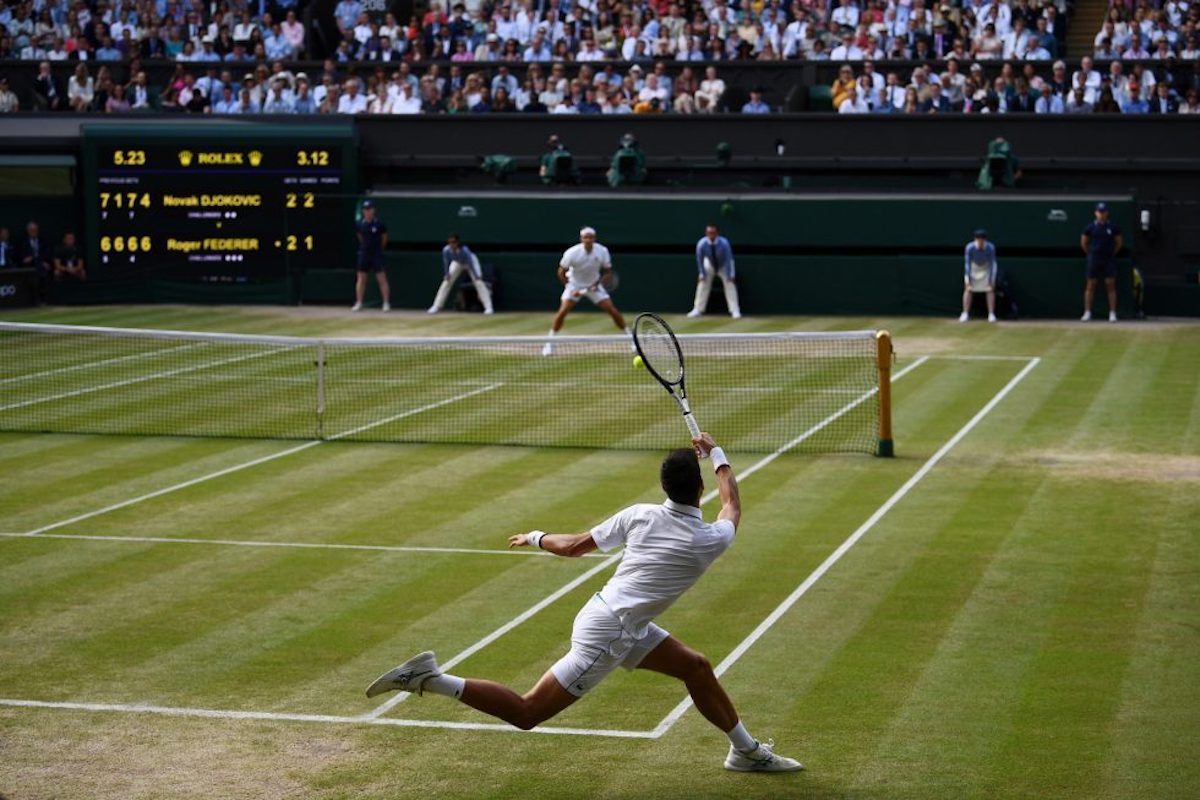Former England opener Raman Subba Row dies aged 92
Former England opener and ICC match referee Raman Subba Row has died at the age of 92.
The All England Lawn and Tennis Club celebrates its centenary, a venue rich in history and intrigue, with exhibitions and upgrades to Centre Court. The venue has witnessed some of the best tennis encounters over the years and has been given a new look as well.

Wimbledon - Celebrating 100 years of the Centre Court (Picture Credits - Twitter)
Wimbledon’s Church Road location in London’s SW19 was the first to have a Centre Court in 1922. The All England Lawn and Tennis Club celebrates its centenary, a venue rich in history and intrigue, with exhibitions and upgrades to Centre Court. The venue has witnessed some of the best tennis encounters over the years and has been given a new look as well.
The most noticeable difference is the new walk-out approach, which includes a new “central reveal” directly below the Royal Box.
The old, tented rain covering structure was removed as part of the Centre Court refresh, and unused camera positions from a previous television broadcaster were repurposed. This created an extra three feet of space between the edge of the grass and the beginning of the stadium seating, allowing for a new central reveal.
Advertisement
“We normally have a very understated side entry,” says Robert Deatker, All England Lawn and Tennis Club estate director, “sometimes you didn’t really quite notice they’ve come in. There are pros and cons, as it is uniquely Wimbledon, but now we have some doors that open in the centre of the clubhouse and players can come onto Centre Court.”
Along with a new approach directly beneath the Royal Box comes additional seating on either side of the box. The removal of unused camera positions opened up 47 new premium seats.
The removal of the old tent structure—now replaced by a modern inflatable weather covering at Centre Court—provides more space for the players on the court, not just for the walk-out. Linesmen and ballkids will now step off the grass and onto the extra three feet of space between the grass and the seating structure, giving players more runback space and the grass more opportunity to stay spry.
Wimbledon added more accessible seating in a premium location around the seating in the lower bowl.
Deatker says a mix of small changes really work toward a “massive tidying up” of the roughly 14,900-seat Centre Court.
Deatker says they didn’t want to lose any connection to history with the changes. For example, for the new central reveal, the design team used detailed modelling techniques and laser scanning to obtain an accurate imprint, flaws and all, of the original stadium façade criss-cross concrete detailing designed by architect Stanley Peach. That detail has now been extended beneath the Royal Box, allowing the new reveal area to be consistent with the rest of the venue.
“We used some of the original styling from the original building so you wouldn’t know if it was new or old,” he says. “We replicated the original architect’s detailing that exists around the court in other places within the central reveal.”
Expect a subtle rebranding of the Centre Court look, with a focus on subtle changes meant to highlight the history. Fans will notice an updated umpire’s chair with the Centre Court centenary logo, but that is the only place where the centenary celebration is visible within Centre Court.
Wimbledon, fortunately, is the only major tennis tournament with a permanent museum, making Centre Court a mainstay attraction in the museum. Along with a permanent exhibit discussing the move from Worple Road to Church Road, the construction of Centre Court, with Suzanne Lenglen winning the first final there, and key historical markers along the way—Centre Court, for example, was bombed during World War II—a temporary exhibition, 100 Years of Change, will be held inside the venue.
“Our temporary exhibition space can do something a bit different, telling personal stories linked to social change, something with a good connection to Centre Court,” says Emma Traherne, Wimbledon Lawn Tennis Museum curator. Within that vein, the exhibit has six themes, each with four personalities anchoring the stories, whether Lenglen’s shocking outfit during that first final to racism in tennis and how that impacted players such as Zina Garrison entering her 1990 Wimbledon final.
“I think the exhibition and centenary is ringing a chord with lots of people,” Traherne says about the popularity of the museum’s exhibition from 2021 through to now.
Traherne claims that, in addition to the stories, they attempted to bring in artefacts. She recalls a mechanical money box that lights up and was used to discuss women’s rights on tour during Billie Jean King’s Battle of the Sexes match. Another section discusses disabilities in tennis, ranging from modern-day wheelchair athletes to a rule change made for Hans Redl, who was injured in World War II and was able to toss the ball and serve with the same arm. A section on racial prejudice highlights Althea Gibson’s handshake with the queen on Centre Court.
Wimbledon’s history, which dates back to 1877, encompasses nearly every aspect of the sport. With Centre Court being the most storied venue in tennis, commemorating 100 years of Centre Court is akin to commemorating tennis.
Advertisement